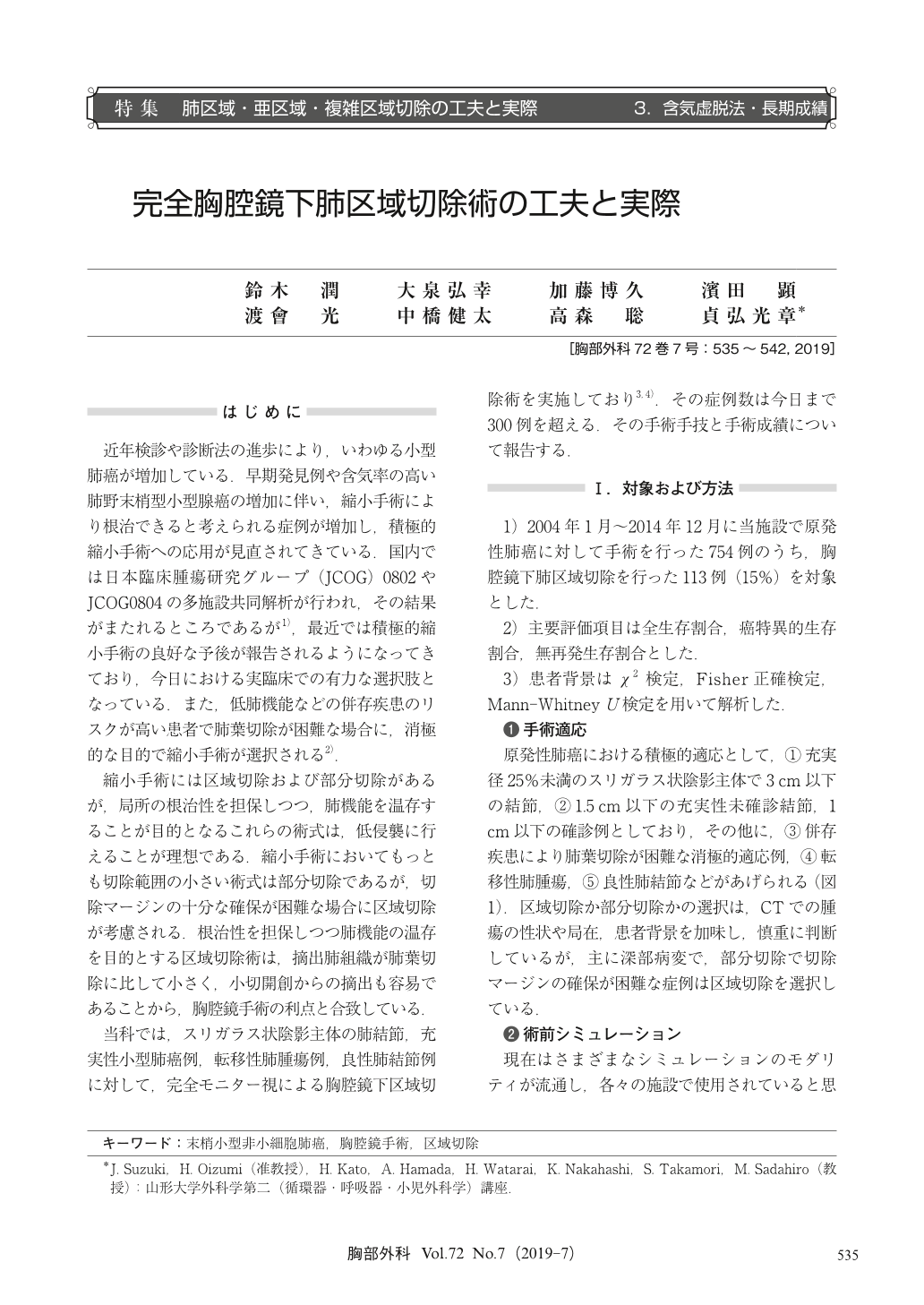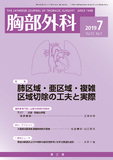Japanese
English
- 有料閲覧
- Abstract 文献概要
- 1ページ目 Look Inside
- 参考文献 Reference
近年検診や診断法の進歩により,いわゆる小型肺癌が増加している.早期発見例や含気率の高い肺野末梢型小型腺癌の増加に伴い,縮小手術により根治できると考えられる症例が増加し,積極的縮小手術への応用が見直されてきている.国内では日本臨床腫瘍研究グループ(JCOG)0802やJCOG0804の多施設共同解析が行われ,その結果がまたれるところであるが1),最近では積極的縮小手術の良好な予後が報告されるようになってきており,今日における実臨床での有力な選択肢となっている.また,低肺機能などの併存疾患のリスクが高い患者で肺葉切除が困難な場合に,消極的な目的で縮小手術が選択される2).
Since 2004, over 300 patients have undergone thoracoscopic segmentectomy without mini-thoracotomy. Thoracoscopic segmentectomy is one of the most complicated surgeries. To perform the complex segmentectomies, pre-operative simulation and 3-dimensional multi-detector computed tomography (3D-CT) are both essential for safely performing operations and for securing adequate surgical margins. Comprehension of the intersegmental and intrasegmental veins to visualize the segmental border facilitates an easier parenchymal dissection. We describe our method and knack for creating an inflation-deflation line for lung segmentectomy that could especially be useful in thoracoscopic procedures for segmentectomy. The 5-year over overall survival, cancer specific survival and recurrence free survival rates were 91.8% (curative intent 98.1% versus compromised 74.6%), 100% and 98.1% (curative intent 100% versus compromised 93.3%). According to these technical aspects, our method of thoracoscopic segmentectomy is acceptable for selective patient.

© Nankodo Co., Ltd., 2019


